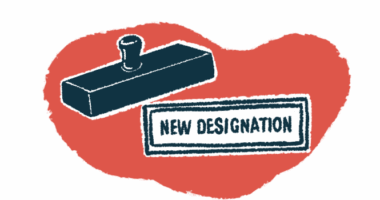Preventing pressure sores with Duchenne muscular dystrophy
Last updated Oct. 23, 2025, by Susie Strachan

Living with Duchenne muscular dystrophy (DMD) can put some areas of the body at higher risk for skin damage. Pressure sores, also called bedsores, decubitus ulcers, or pressure ulcers, develop when skin and underlying tissue are damaged due to prolonged pressure or friction.
The good news is that many DMD pressure sores can be prevented. Regular skin care, checking for early warning signs, and taking steps to reduce pressure all play an important role in protecting skin and tissue health.
Why DMD increases the risk of pressure sores
Because DMD gradually weakens muscles, more time may be spent in a wheelchair or bed. Your posture may also be affected, leading to leaning, sitting lopsidedly, or having difficulty staying balanced.
This places constant pressure on certain parts of the body, especially over bony areas, which reduces blood flow and makes the skin more susceptible to damage.
Friction and shearing — when skin rubs or slides against surfaces during movement — from medical devices can also contribute to skin breakdown. For instance, scoliosis braces or tubing may press against the skin, causing irritation in unexpected areas.
Early signs and common areas for pressure sores
Recognizing a pressure sore early makes treatment easier and more effective. A pressure sore may start as a patch of skin that looks red on lighter skin or purple/blue on darker skin. This color won’t fade when pressed.
In the early stages, sores might not be painful but can become uncomfortable as they progress, so even subtle changes deserve attention.
Warning signs to look out for include:
- redness or swelling that doesn’t fade after changing position
- skin that feels warmer or cooler than the surrounding area
- changes in texture, such as firmness, softness, dryness, flakiness, or sponginess
- pain, tenderness, or itchiness in the area
Pressure sores are most likely to appear over bony areas where skin is thinner and padding is limited, such as on the heels, hips, tailbone, bottom, elbows, and shoulders. Checking these areas regularly during bathing, dressing, or transferring in and out of a wheelchair can help catch changes early.
Strategies to help prevent pressure sores in DMD
Preventing pressure sores takes a proactive, daily approach. The following strategies can help lower their risk and keep your skin healthy:
- Reposition frequently: Shifting position regularly helps prevent pressure sores. You or your caregiver should aim to shift your body every two hours when in bed and every 10 to 15 minutes if in a wheelchair.
- Incorporate supervised tummy time: For younger children, using cushions or towels can help stretch muscles, relieve pressure on the back and tailbone, and build strength in the neck and shoulders, reducing pressure buildup.
- Use pressure-relief pads and cushions: Bed and wheelchair cushions or air mattresses can evenly distribute weight, easing pressure on bony areas.
- Follow a daily skin care routine: Check your skin daily and clean it gently with mild soap and water. Keep your skin clean and dry to prevent breakdown from moisture, and use barrier creams as needed.
- Maintain good nutrition and hydration: Eat a balanced diet with enough protein and vitamins to support your skin health, and stay hydrated to keep your skin supple.
- Wear seamless, soft clothing: Tight or rough clothing can increase pressure and cause discomfort, especially over bony areas. Select adaptive clothing that feels gentle on your skin to prevent unnecessary irritation and skin damage.
- Sleep in a supportive, adjustable bed: Motorized beds with adjustable positions are designed to help turn and reposition your body, easing transfers and providing pressure relief.
Work with your care team
While pressure sores are not a direct DMD symptom, your DMD healthcare team can still provide support and guidance in preventing and managing pressure sores.
Physical and occupational therapists can recommend cushions, beds, and supportive equipment, and demonstrate safe repositioning techniques for you and your caregivers. Wound care specialists can monitor your skin health and advise on proper care of sensitive areas.
Training for family members and caregivers can also be valuable. Learning how to spot early signs, assist with repositioning, and apply protective creams or pads helps support an effective pressure sore prevention routine.
If you notice redness that doesn’t improve after moving, skin breakdown, or an open sore, contact your healthcare team. Early intervention may prevent sores from getting worse.
By paying close attention to your skin, building preventive steps into your daily routine, and working closely with your care team, you can lower the risk of pressure sores.
Muscular Dystrophy News Today is strictly a news and information website about the disease. It does not provide medical advice, diagnosis, or treatment. This content is not intended to be a substitute for professional medical advice, diagnosis, or treatment. Always seek the advice of your physician or other qualified health provider with any questions you may have regarding a medical condition. Never disregard professional medical advice or delay in seeking it because of something you have read on this website.






